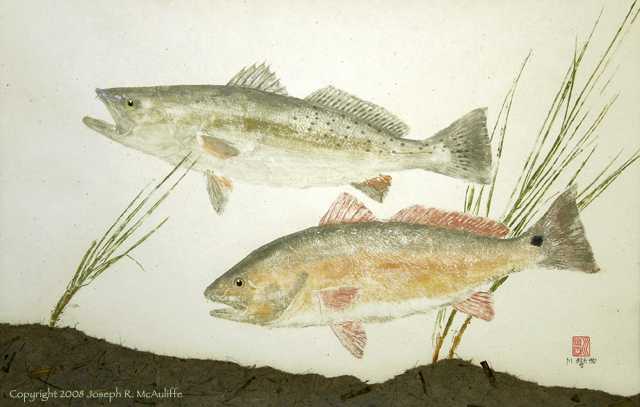
The spotted sea trout and a red drum face into the current as the tide turns and flows back to the sea. The stems of salt marsh cordgrass bend in the flow. The two predators wait opportunistically to seize smaller fish, crabs, and shrimp that are swept along by the tide.
Salt marshes are one of the earth’s most productive ecosystems. Hundreds of thousands of acres of low salt marsh on the eastern coast of the United States are covered with salt marsh cordgrass. Twice daily these grassy expanses are drained and flooded by the tide’s ebb and flow. Salt marsh cordgrass literally provides the stitching that binds the ecological fabric of the marsh. Its tough, spreading roots trap and hold the fine, rich silt in place. Oysters, mussels, barnacles and many other kinds of animals attach to the persistent bases of the plants. Dead, decaying leaves and stems provide food for myriads of tiny organisms that ultimately are eaten by larger and larger creatures, including the spotted sea trout and red drum. Both fish require the rich environment of the salt marsh for feeding and reproduction.
Over half of the original salt marshes of the eastern United States have been destroyed, many between 1950 and the mid-1970s. Fortunately, we are beginning to realize the value and importance of these special environments and have learned that we must protect and conserve them.
Size: 37 x 25 inches (2003)
Return to Gallery 2.